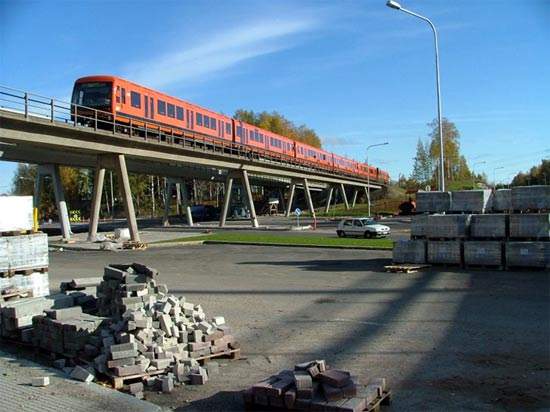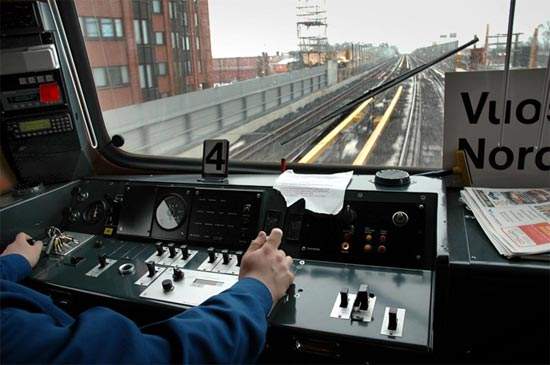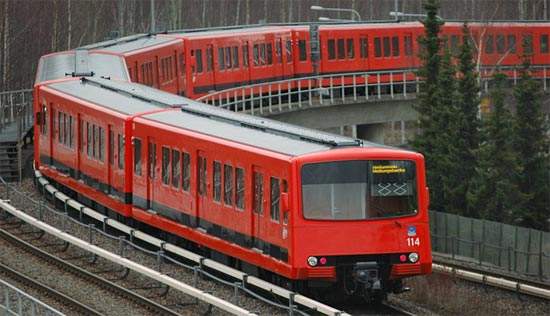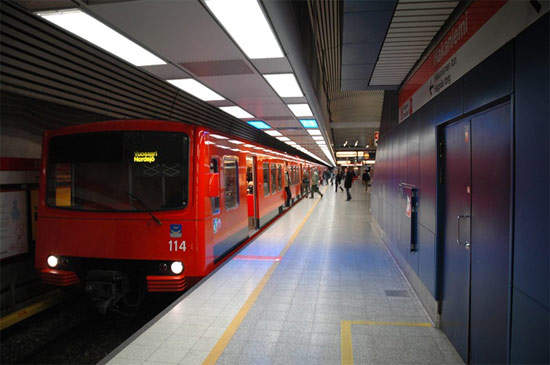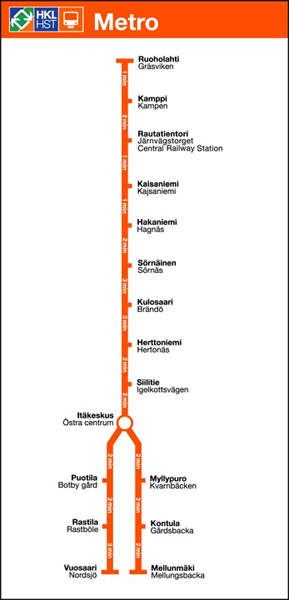Finland’s city of Helsinki is home to the world’s most northerly metro system, which has overcome strong opposition to extend into Espoo, to the west of the city centre.
The system first opened for public services in 1982, following almost three decades of planning. It is operated by Helsinki City Transport and is currently a 22.1km network with the main line split into two branch lines at Itakeskus – one running north to Mellunmaki and a second south to Vuosaari.
Helsinki’s suburbs are spread over several islands, with a greater population of 1.2 million including the Espoo and Vantaa areas. Whilst not being the most extensive of metro networks, the system attracts 50 million passenger journeys each year from the 555,000 population of the central districts.
The new extension, which received official approval in September 2006, will take the system into Espoo, opening up greater journey possibilities and easier travel into the centre of the city. When completed, it is expected to transport about 100,000 passengers a day.
The project
Helsinki’s metro has been gradually extended since its official – and delayed – opening in 1982. New stations were added in 1983–84, an extension from Itakeshus to Kontula in 1986, and another to Mellunmaki in 1989. The most recent addition was the line from Itakesbus to Vuosaari in 1998.
There are currently 16 stations and extensive bus networks feed the metro from surrounding areas to provide an integrated transport system.
Until recently there was little support from local councils for the push into Espoo, Vantaa and Sipoo. However, September 2006 saw the end of a long running battle, with Espoo City Council approving the extension to Matinkyla by a vote of 45 to 19.
Espoo – part of the greater Helsinki conurbation – lies to the west of the city centre and has a population of 230,000, making it the second biggest city in Finland. The metro extension is projected to cost €500m, and the city council has set stringent conditions for its construction, including that the Finnish State Government must pay for one third of the total bill.
Infrastructure
A journey on the current metro route with its two eastern branches spends a total of 6.5km underground, 14.6km at ground level and 2.5km on bridges.
The stations are a mixture of deep underground, shallow depth and ground level stations. Only those under the city centre are fully submerged, and have a dual role as air raid shelters in case of war, with space at each one for 21,000 people.
The metro has been built using non-standard Finnish 1,524mm gauge track. All platforms are 135m long and fully accessible by wheelchairs. Power supply is 750V DC from a live third conductor rail, with return through the running rails.
The 13.9km wesstern route to the city of Espoo involves the construction of seven stations, plus two underground water crossings between Ruoholahti (the current western terminus) and Lauttasaari and Koivusaari and Keilaniemi. Construction began in November 2009, and the line is expected to be operational by the end of 2015.
The line is being built for automatic driverless operation. The trains will run on automatic control, and the traffic will be monitored from a control room.
As of July 2011, excavation work on 1.8km Matinkyla tunnels, and work on two shafts and a station were in progress. The contract was awarded to Oden, a Swedish contractor. The excavation work is expected to be completed in November 2013.
Rolling stock
Two types of train are in service on the Helsinki Metro. The first, designated M100, was built by Stromberg of Finland, and introduced between 1977 and 1984.
A second generation of rolling stock entered service in 2001. Built by Bombardier Transportation, they are known as class M200.
In tunnels, speed is limited to 70km/h (44mph), whilst on the open sections it is raised to 80km/h (50mph). Trains are usually six cars in length, formed of three two-car units with each vehicle 44.2m in length.
Signalling and communications
Signalling of the Helsinki route is maintained by four-aspect colour lights. However, this equipment is rapidly becoming life-expired, and a decision was taken in May 2006 to opt for automatic trains to replace the presently manually-driven vehicles.
The modernisation of the existing metro route will involve installation of Trainguard MT automatic control system and platform screen doors being supplied by Siemens. It will also include replacement of switchover monitors for controlling traffic and safety.
The future
Construction of a Helsinki commuter rail line, called the Ring Rail Line, began in May 2009. It is expected to be completed by August 2014. The line will connect the Helsinki-Vantaa airport to the railway network at Vantaankoski. Therefore the plans to build a second line for Laajasalo to Pasila is unlikely to begin. The city recommends the extension of the tram network, rather than the extension of the metro, to Laajasalo.
The greatest development is the decision by Helsinki City Council to equip the system for driverless operation. This could be in place by 2014.

